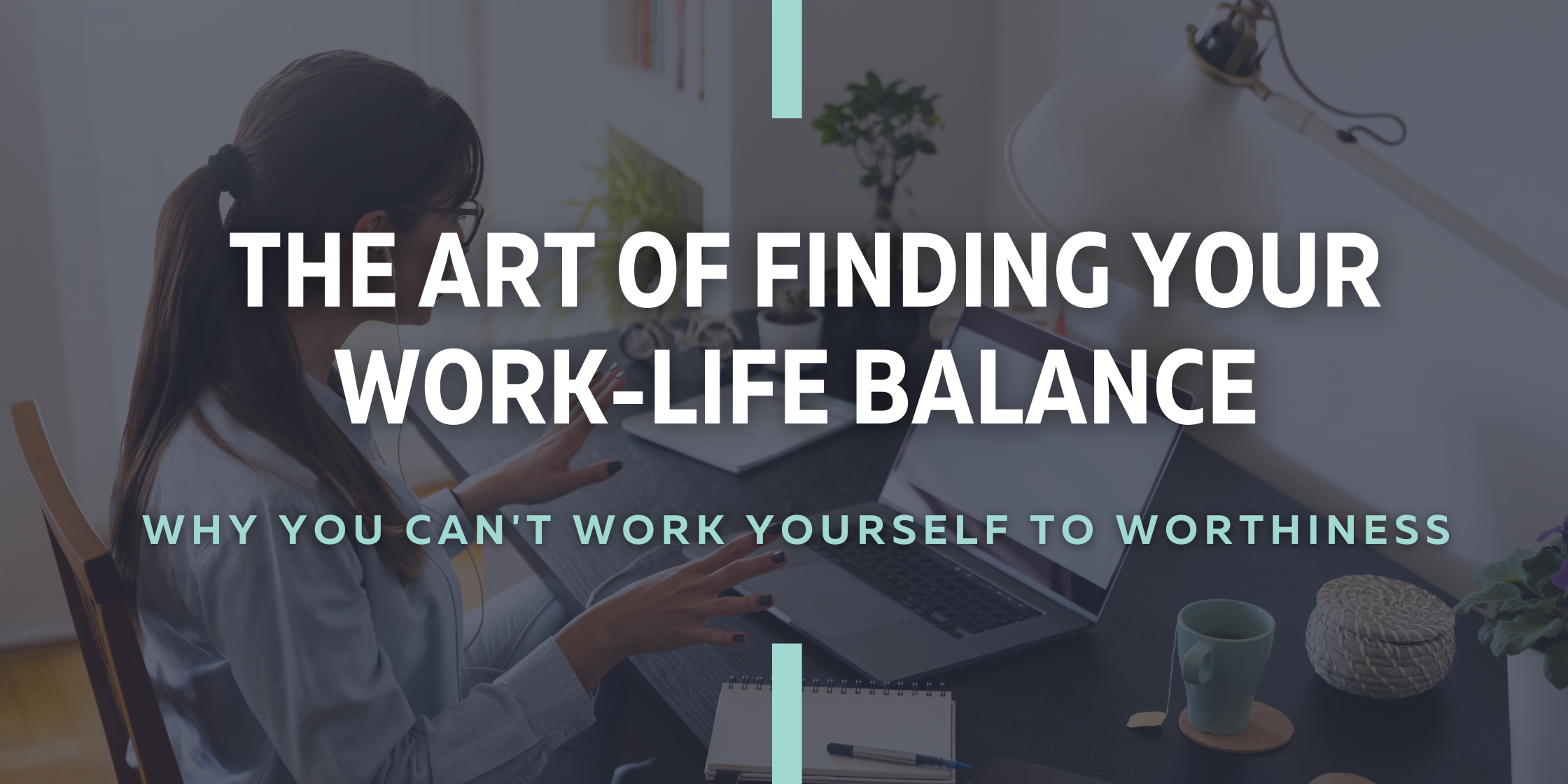Ah, work-life balance – you may have heard of it. In today’s fast-paced world, where technology enables constant connection, maintaining a healthy work-life balance has become an elusive goal for many. The demands of the modern workplace can take a toll on our mental health, making it crucial to prioritize and cultivate a balance between our professional and personal lives.
At Flourish, we’re all about keeping the balance in check – it’s the key to boosting not only our team’s spirit but our company’s success. However, we’re not afraid to admit that sometimes we need a little nudge in the right direction when the line between work and life blurs. Since the beginning of the year, Flourish has partnered with Rachel Sullivan, the owner of Solid Ground Counseling Center in Madison to participate in workshops focused on understanding and supporting our mental health in the workplace. In our latest workshop, Rachel guided our team through a thoughtful discussion about the concept of work-life balance as well as the importance of understanding what it means to each of us.
Curious about what we learned? We’ve got your back! Straight from our inspiring workshop, we’ve handpicked some thought-provoking questions to help realign your focus and reclaim your balance.
Finding Your Tempo: What does Work-Life Balance Look Like to You?
What exactly is work-life balance? Think of it like choreographing the perfect dance routine with two partners – your career and your personal life. It encompasses the ability to allocate time and energy for both work-related tasks and activities that bring joy, relaxation, and personal growth.
Chances are that you may not have a clue what work-life balance looks like for you. If that’s the case – take a moment to think about your ideal workday and what activities you enjoy in your free time. Have you stopped doing the things you love because you’re consumed by stress at work? Do you find your personal life has impacted your ability to “show up” for your team? Being aware of your behavior when one part of your life consumes the other is essential to establishing a work-life balance.
In fact, striking this equilibrium can lead to reduced stress levels, increased job satisfaction, and improved overall mental health.
When the Beat Skips: What is the Emotional Toll of Imbalance?
When the rhythm changes and the balanced work-life routine turns into chaos – we all know the feeling. But, how do you recognize when things are out of balance?
Some tell-tale signs are when stress sneaks in, your phone is glued to your hand and you’re constantly checking emails after hours. Or maybe your leisure time feels like a rare occurrence seen once in a blue moon. In fact, you may also find yourself not doing the activities that usually bring you joy in your downtime. The incessant cycle of work-related tasks can seep into personal time, eroding our ability to recharge and engage in meaningful activities that nourish our mental health. Identifying the symptoms and signs of your imbalance is key to eventually getting yourself back on track.
Can’t Keep Your Balance: What Are Your Hurdles to Balance?
Several challenges stand in the way of achieving work-life balance. It can feel like trying to keep your balance while doing a turn. The boundary between “work hours” and “me time” can blur, especially with the rise of remote work. Workplace cultures that prioritize constant availability and discourage breaks can exacerbate the struggle to maintain balance. The urge to respond to emails at all hours is real, but let’s be honest – midnight isn’t the prime time for coherent thoughts. This can lead to a fear of missing out or falling behind thus driving many to work longer hours, often at the expense of self-care. Maybe you can relate to these hurdles, too. Understanding what hurdles are preventing you from finding balance can help you identify the solution, as well as denormalize unhealthy habits and practices.
Finding Your Rhythm: What Are Your Solutions?
Fear not, recentering your balance isn’t as daunting as attempting a backflip, you can easily take steps to get back to balance. Implementing clear boundaries by setting designated work hours and unplugging during personal time is a crucial step. This establishes work-life separation as well as balance. Prioritizing tasks and delegating when possible can also alleviate the pressure of excessive workload. Regular breaks, exercise, and hobbies contribute to restoring energy and fostering a healthier mental state.
The Grand Finale: The Significance of Staying Balanced
The emotional benefits of a balanced work-life dynamic are profound. When balance is achieved, individuals report lower stress levels, increased creativity, and greater job satisfaction. Moreover, when employees feel supported in their pursuit of balance, organizations benefit from increased employee morale, loyalty, and higher retention rates. Everyone deserves to live a life with the feeling of well-being and satisfaction both personally and professionally.
To close off our workshop, Rachel left these words of wisdom with our team – “You can’t work yourself to worthiness.” Your worthiness is not contingent on sacrificing your personal life for the sake of maintaining an unhealthy work standard. Your work-life balance shouldn’t be seen as a luxury but as a necessity. Engaging in activities outside of work promotes mental well-being and fosters a positive outlook on life. By recognizing the emotional toll of imbalance, identifying common hurdles, and pursuing actionable solutions, individuals can create a healthier and more fulfilling work-life dynamic. Emotional stability translates into improved relationships, both in the workplace and at home, as individuals are more present and attentive. It is not a luxury, but a necessity to maintain optimal mental health in the workplace. Finding your balance might take a few missteps, but it will be the best dance you ever learned.

